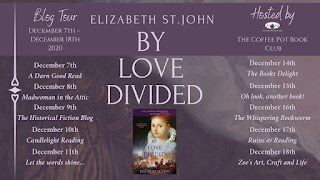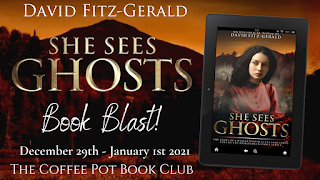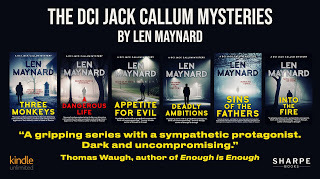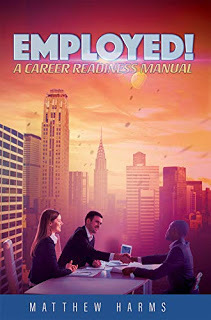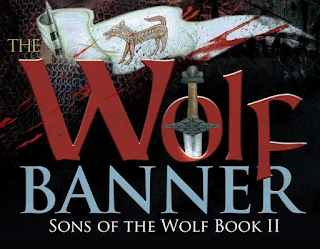MaryAnn Bernal's Blog, page 6
January 4, 2021
Pen for Hire, Matthew Harms, interviews author Mary Ann Bernal

Matthew Harms | Author @penforhire187

Episode 34 of http://Penpodcast.com with Mary Ann Bernal @BritonandDane is live now. Mary Ann is a true friend of the show so please support her and her work by visiting her website, subscribing to the channel, and liking her video! #WritingCommunity #author #podcast
December 31, 2020
Book Spotlight - She Sees Ghosts―The Story of a Woman Who Rescues Lost Souls (Part of the Adirondack Spirit Series) By David Fitz-Gerald
A blazing fire killed her family and devoured her home. A vengeful demon haunted her. Ghosts of the Revolutionary War needed help that only she could provide. A young woman languished, desperate to survive, and teetered on the edge of sanity.
Mehitable grew up in a freshly tamed town, carved from the primeval forest. Family, friends, and working at the mercantile filled her days and warmed her heart. For Mehitable, life was simple and safe, until tragedy struck. When her family perished in their burning home, she retreated into a world of her own making.
As a young girl, she had seen glimmers, glimpses, and flickers of the spirit world. She closed her eyes. She turned her back. She ignored the apparitions that she never spoke of, desperately hoping they would leave her in peace. She was mistaken.
Grief-stricken, Mehitable withdrew from the human world. Ghosts were everywhere. They became bolder. She could no longer turn her back on the spirit world. Her friends feared for her survival. Nobody understood her. She would have to find her own way.
Fans of TV’s Ghost Whisperer and Long Island Medium will especially love She Sees Ghosts. This historical novel features memorable characters and delivers bone-tingling, spine chilling goosebumps. It stands on its own and it is the next installment in the Adirondack Spirit Series by the award-winning author of Wanders Far―An Unlikely Hero’s Journey. David Fitz-Gerald delivers a historical novel with a bittersweet ending that you won’t see coming.
Would she save the spirits’ souls, or would they save her? Only time would tell.
Buy Links:
She Sees Ghosts is FREE on #Kindle for a Limited Time
Amazon
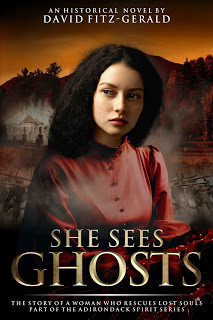
About the Author
 David Fitz-Gerald
David Fitz-Gerald David Fitz-Gerald writes fiction that is grounded in history and soars with the spirits. Dave enjoys getting lost in the settings he imagines and spending time with the characters he creates. Writing historical fiction is like making paintings of the past. He loves to weave fact and fiction together, stirring in action, adventure, romance, and a heavy dose of the supernatural with the hope of transporting the reader to another time and place. He is an Adirondack 46-er, which means that he has hiked all of the highest peaks in New York State, so it should not be surprising when Dave attempts to glorify hikers as swashbuckling superheroes in his writing. She Sees Ghosts―A Story of a Woman Who Rescues Lost Soulsis the next installment in the Adirondack Spirit Series.
Connect with David
Website • Twitter • Facebook • Instagram
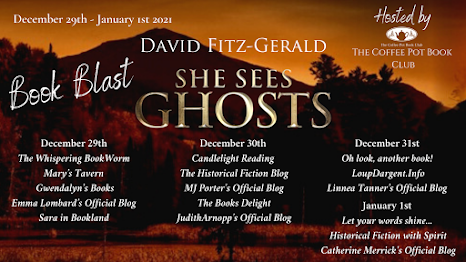
December 29, 2020
The inspiration behind The London Monster By Donna Scott
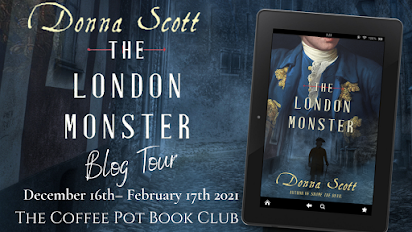
In 1788, exactly one hundred years before Jack the Ripper terrorizes the people of London, a sexual miscreant known as the London Monster roams the streets in search of his next victim…
Thomas Hayes, having lost his mother in a vicious street assault, becomes an underground pugilist on a mission to rid the streets of violent criminals. But his vigilante actions lead to him being mistaken for the most terrifying criminal of all.
Assistance arrives in the form of Sophie Carlisle, a young journalist with dreams of covering a big story, though she is forced to masquerade as a man to do it. Trapped in an engagement to a man she doesn’t love, Sophie yearns to break free to tell stories that matter about London’s darker side—gaming, prostitution, violence—and realizes Tom could be the one to help. Together, they come up with a plan.
Straddling the line between his need for vengeance and the need to hide his true identity as a politician's son becomes increasingly difficult as Tom is pressured to win more fights. The more he wins, the more notoriety he receives, and the greater the chance his identity may be exposed—a revelation that could jeopardize his father’s political aspirations and destroy his family’s reputation.
Sophie is also in danger as hysteria spreads and the attacks increase in severity and frequency. No one knows who to trust, and no one is safe—Tom included, yet he refuses to end the hunt.
Little does he realize, the monster is also hunting him.
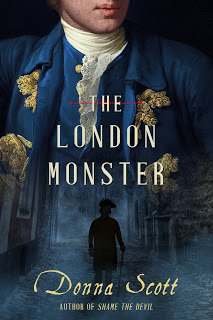
My Inspiration for Writing The London Monster
Donna Scott
As an author, I tend to gravitate toward subject matter that is rarely discussed in historical fiction. I like to write about things that some might consider uncomfortable or, rather, not the stuff of polite conversation. Provocative, perverse, salacious? Call it whatever you want. For whatever reason, I am drawn to the obscure or bizarre. If you’ve read Shame the Devil or The London Monster, then you know what I mean.
My favorite character to write is always the villain. He’s usually the most complex and therefore the most interesting—at least, to me. But naturally (and unfortunately), he must take a backseat to the other characters, especially the hero and heroine. So when the opportunity appeared to write a villain I could showcase, I grabbed it.
I’d never heard of the London Monster until I was browsing through some archived newspapers from the late 18th century and read about one of his attacks. This particular one was likely highlighted because it occurred on the evening of Queen Charlotte’s birthday celebration in January of 1790. Two sisters were walking home when a man approached them and, after uttering a series of indecent comments and engaging in a brief scuffle, pulled a knife and stabbed the older sister in the hip. His comments were inappropriate, too licentious for the women to repeat when questioned by authorities. According to records, prior to the attack of the sisters, the monster had already abused, beaten, and cut more than a dozen women. The location of the stab wounds indicated that his attacks were of a sexual nature. This made me wonder about the type of man who would target his victims in such a way—his psyche, his motives, his strategy. I also thought about the women he approached—all beauties, as they say—and how some women faked attacks to gain celebrity. It seemed bizarre that anyone would do that, but vanity can make us do things that aren’t necessarily logical or smart. I also read about the innocent men who were arrested for the monster’s crimes and then released after character witnesses and others came forth on their behalf. Ultimately, an hysteria erupted because one deranged man had a strange perverted sense of his own entitlement and sexual prowess.
Even though I knew he’d be the central character for my book, I had to figure out my other characters. Who were the types of people who might live in this highly sexualized period of London history, and how would they come in contact with this perverse miscreant? I like using main characters who are fictional yet have interactions with real historical figures. Perhaps they may never have done anything spectacular in their lives to merit mention in a newspaper or book or historical record of any kind, but their flaws and lifestyles reveal more about the time period than someone who, because of his or her social status or ranking, was more well known. In late 18thcentury London, a city rife with vices—gambling and prostitution being the most prominent—the most likely figures to include in the story were an aspiring journalist, an underground boxer, a prostitute, and a sexually tormented noble. It’s a strange cast of characters, all from different backgrounds and classes but, in one way or another, they all become entwined with the monster. And even more importantly, they all have their own stories to tell.
Buy Links
¸.•*´¨)✯ ¸.•*¨) ✮ ( ¸.•´✶
About the Author
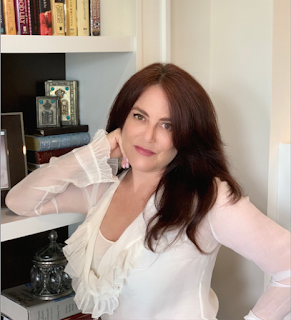
Donna Scott
Donna Scott is an award-winning author of 17th and 18th century historical fiction. Before embarking on a writing career, she spent her time in the world of academia. She earned her BA in English from the University of Miami and her MS and EdD (ABD) from Florida International University. She has two sons and lives in sunny South Florida with her husband. Her first novel, Shame the Devil, received the first place Chaucer Award for Historical Fiction and a Best Book designation from Chanticleer International Book Reviews.
Connect with Donna:
Website • Twitter • Facebook • Instagram

The Books Delight: AUTHOR INTERVIEW: MARY ANN BERNAL / FORGIVING NERO
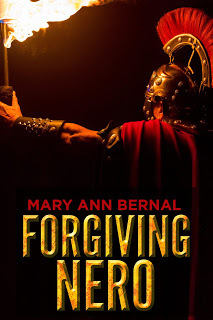
Welcome readers to another author interview. Today we are happy to have Mary Ann Bernal. Join us for a great conversation about writing, history, and Mary Ann's books.
JMR-Welcome to the Books Delight, Mary Ann. Tell our readers where you live, what you do for fun, and what the perfect day looks like?
MAB-Thanks for having me. I currently reside in Elkhorn, Nebraska, and enjoy attending my grandchildren’s activities. From softball to dance competitions, you will find me in the stands, cheering on my talented offspring. A perfect day would include making my daily word count, doing my treadmill miles, and being first in line in the carpool lane at my granddaughter’s school.
JMR-Your written books are set in Saxon England, Crusading Europe, and now ancient Rome. So, what is your absolute favorite time period? Why?
MAB-That is a tough question. I find history fascinating and am always trying to imagine how people lived their lives in previous centuries. Greek mythology piqued my interest at an early age. Ancient Greece, Rome, and Egypt held their own allure, a notable difference when compared to the dark and middle ages. But the romanticized knights of the British Isles deeply affected an impressionable teenager as did the heroic tales of the Vikings, albeit as Hollywood interpreted their escapades. I enjoy every time period equally without favoritism. However, if a choice must be made, I would favor Ancient Egypt on Monday, Ancient Greece on Tuesday, Ancient Rome on Wednesday, Crusading Europe on Thursday, and Saxon England on Friday. As you can see, in fairness, I went in alphabetical order.
JMR-Who is your favorite historical female? Why? If you could ask her one question, what would it be?
MAB-Eleanor of Aquitaine was one of the most powerful women in the twelfth century. As Queen of France, she participated in the Second Crusade. She successfully annulled her marriage to King Louis, becoming engaged to the Duke of Normandy (the future Henry II of England) shortly thereafter. She refused to be subjected to “knowing her place.” She was not meek and submissive but a force to be reckoned with. As for my question, I would ask Eleanor, “What really happened in Antioch?” (Hint: Her husband was jealous of Eleanor’s affection for her uncle, Raymond of Poitiers.)
JMR-You have a strong connection to the U.S. Military. Tell our readers about that and why.
MAB-Freedom is not free, and too many people take our freedoms for granted. Without the courage and sacrifice of our military, we would not enjoy the lifestyles we covet. Democracy is fragile and must be protected at all costs. We must never forget the blood that was shed to keep us free.
JMR- Thank you for this Mary Ann, my husband and I are both Air Force Veterans and my son is currently serving in the Army. We appreciate your support.
JMR- Mary Ann, tell us about your new book, Forgiving Nero. What’s it about, and how is it different from other books about this much-maligned man?
MAB-History is written by the victors. However, Tacitus, Suetonius, and Cassius Dio, the ancient historians responsible for vilifying Nero, had no first-hand knowledge of the events comprising Nero’s reign. Their information was based on hearsay (unreliable in a court of law) and dramatic personal interpretation of the circumstances. For example, fiddles did not appear until the Middle Ages. Thus, Nero could not fiddle while Rome burned. In fact, he was not even in the city when the fire started. While Nero was guilty of monstrous atrocities, he was also a kind and sensitive young man who wanted to help the common people when he became emperor. What forces slowly eroded Nero’s idealistic pursuits for the common good? Nero was flawed like the rest of humanity. He deserves to be remembered as the man he truly was, not the man history condemned him to be.
JMR-You’ve traveled to the UK, Ireland, Italy, and Greece for your research. Where did you feel the closest connection to your characters?
MAB-I would have to say my visit to the U.K. ranks at the top of the list. When I walked the ramparts at Kenilworth (Robert Dudley’s home), my mind shifted to the ninth century, and I pictured Vikings running towards the walls defended by the Saxons. The historical inaccuracies did not matter. I looked down upon an imagined enemy, hearing the bloodcurdling war cries in my mind, picturing the turmoil as arrows rained and men fell. The Priory Ruins at Thetford had its own ghosts of monks chanting in the abbey ruins, praying for salvation from the formidable enemy. The Anglo-Saxon Village at West Stow represents how the common people lived, enduring hardships we only read about.
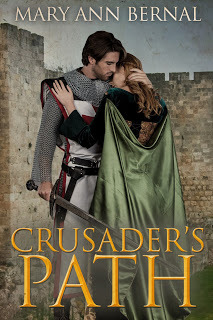
JMR- Your books include a strong romantic storyline, which takes precedence, the history, or the love story?
MAB- The love story is interwoven with the history. The mores of the day dictate behavior. The characters conduct themselves as befitting their station in life. Conflict arises when a character does not follow the rules. Being an incurable romantic, at the end of the day, love conquers all.
JMR- What’s next? Another Nero book?
MAB-A few characters from Ancient Egypt have appeared on the horizon, demanding their story be told. I’m considering a novel set during Pharaoh Akhenaten’s reign. I always have another tale I want to tell. I need to find the time to write them all.
JMR- Tell our readers how to find you on social media and the web.
Website Whispering Legends Press Facebook Twitter
Blog Pinterest Instagram YouTube
JMR- What question were you hoping I’d ask but didn’t?
MAB: Any fun facts you wish to share?
Nancy Walker (actress best known for appearing on the T.V. show Rhoda) and I almost collided on a sidewalk in Manhattan.
Tom Jones touched my hand during a concert at the Westchester County Center in White Plains, New York.
After visiting the Thetford Priory Ruins in Norfolk, U.K., I learned that Ghost Hunters had featured the site, which is reputedly haunted. I did not see any specters, much to my disappointment.
JMR- Wow, Tom Jones! How long did it take for you to wash that hand?!
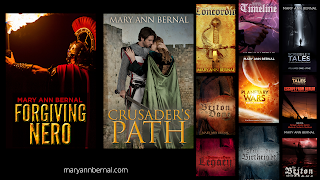
JMR- Thank you, Mary Ann, for stopping by, we really enjoyed talking with you today. Good luck with your new book! Readers if you are interested in checking out Mary Ann's books click on the Amazon button below.

December 22, 2020
The Inspiration behind Three Monkeys by Len Maynard
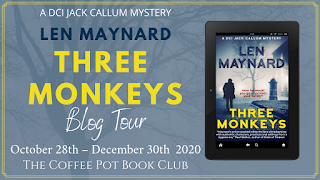
Writing the DCI Jack Callum MysteriesThe inspiration behind the series. Len Maynard
To further complicate Jack’s life I had the return of his and Annie’s estranged daughter Joanie ready to splinter their cosy world.
5) Sins of the Fathers
I was 20,000 words into Sins and rolling along like a turbocharged Hillman Hunter when my landlord and owner of the cottage where I’d spent the best part of the decade, returned from his sojourn abroad in need of a place to live.
Now I’m back to writing and the cottage seems like a lifetime ago. Phew! It was touch and go for a moment there.
Writing the DCI Jack Callum Mystery series has been a hell of a ride, and I’m not sure I’m ready to get off just yet.
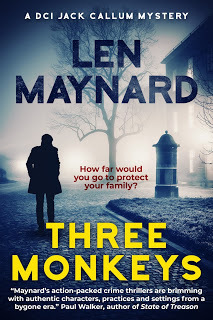
1958.
Buy Links:

Len Maynard
Len Maynard was born in North London in 1953.
In 1978, a book of short ghost stories, written in collaboration with Michael Sims, was published by London publisher William Kimber. For the following forty years the pair wrote ten more collections of ghost stories before moving into novels in 2006, completing over thirty more books, including the successful Department 18 series of supernatural/crime crossover novels as well as several standalone novels and novellas in the supernatural and crime genres.
Always a keen reader of crime novels, and with a passion for the social history of the twentieth-century it was fairly inevitable that, when he decided to branch out and write under his own name, some kind of combination of these two interests would occur.
The six DCI Jack Callum Mysteries were the result of several years of total immersion in the world he created for Jack Callum, his family, his friends (and enemies) and his work colleagues.
He has also written a trilogy of adventure thrillers set in the Bahamas (also available from Sharpe Books).
He is currently at work on the seventh book in the DCI Jack Callum series.
Connect with Len:
Website • Website “The DCI Jack Callum Mysteries” • Twitter • Instagram • Facebook
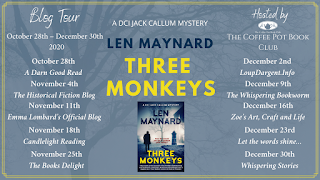
December 20, 2020
Spotlight on novelist MJ Porter
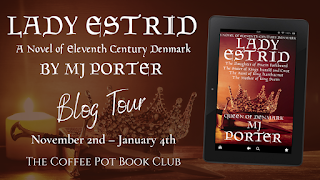
I once had thirty-seven rabbits and forty-three gerbils. (I now have only two rabbits).
2) I hate my middle name, even though two of my friends have it for a first name.
3) When I was a teenager, I worked in a local music shop, and as such, have a strange and detailed knowledge of the music scene during the early 1990s, as revealed to me when watching an episode of Top of The Pops 2 for 1990 recently. I knew the words to almost every song. (The music shop was called Tudor Tunes. Even when I was a teenager, I couldn’t get away from history.) I’ve just googled the shop and discovered it shut over a decade ago. Ah, I’m traumatised.
4) When I was much younger, I had my picture taken for the local paper wearing a NASA astronaut’s helmet. They had to put a bit of paper in the catch so it didn’t seal me in.
5) I almost didn’t study history at GCSE, A Level, or as a degree. I changed my mind every time and caused many people a lot of problems. Not sure I’d get away with it anymore.
I decided to study history at GCSE rather than Drama after visiting my great-grandfather’s grave who fought in the First World War. While one of the lucky ones who came home to his family, he died in 1924 from injuries sustained during the war. It made me really angry to think my lovely Grandad grew up without his Dad (he would have been four when his Dad died) because of the war and I wanted to find out why!

Daughter, Sister, Duchess, Aunt. Queen.
United by blood and marriage. Divided by seas. Torn apart by ambition.
Lady Estrid Sweinsdottir has returned from Kiev, her first husband dead after only a few months of marriage. Her future will be decided by her father, King Swein of Denmark, or will it?
A member of the ruling House of Gorm, Estrid might not be eligible to rule, as her older two brothers, but her worth is in more than her ability to marry and provide heirs for a husband, for her loyalty is beyond question.
With a family as divided and powerful as hers, stretching from England to Norway to the land of the Svear, she must do all she can to ensure Denmark remains under the control of her father’s descendants, no matter the raging seas and boiling ambition that threatens to imperil all.
Buy Links:
***
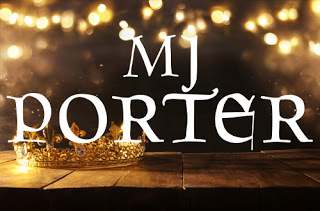
About the Author
I’m an author of fantasy (Viking age/dragon-themed) and historical fiction (Early English, Vikings and the British Isles as a whole before the Norman Conquest), born in the old Mercian kingdom at some point since AD1066.
I write A LOT. You’ve been warned!
Connect with MJ Porter

December 17, 2020
Spotlight on PenforHireNYC author and PenPodcast host Matthew Harms

Penforhirenyc offers premier ghostwriting and author coaching services for writers of all skill levels. Whether it be successful business professionals who want to enhance their brand and improve profitability by creating a book that showcases their expertise or authors who just need guidance in starting or finishing their work, we have proven effective solutions.
In December of 2020, we launched the PenPodcast show, designed to help feature authors and bring their message to a larger audience. We hope that more authors will find their voice and become more accessible to their readers through discussions on their books, background, and process amongst a range of other topics.
Both Penforhirenyc and PenPodcast are currently accepting new author submissions and we look forward to expanding our services and show count in 2021. For a free consultation with Penforhirenyc, please visit PenforHire and hit the "Book Now" button. To sign up for a spot on PenPodcast, head over to PenPodcast and fill in the contact form.
´¸.•*´¨)✯ ¸.•*¨) ✮ ( ¸.•´✶

Matthew Harms
Matthew Harms is a New York born and based Freelance Writing Professional and Success Coach. His Bronx upbringing, combined with diverse educational and career backgrounds provide a multitude of facets to each project he works on.
As a lifelong writer, Matthew has learned from, and adapted, his various experiences in fields such as Finance, Project Management, and Corporate Training. He has now dedicated his time to giving back to the community and providing a voice for the voiceless, as well as helping to enhance the work of writers looking to take their projects to the next level.
Matthew is the author of Grow Up: No, Really, and Employed: A Career Readiness Manual, books designed to enrich people's lives through basic life skills and career readiness training. When he is not focused on helping others, Matthew's other passions are writing works of fiction and spending time with his children.
Connect with Matthew
PenforHire Matthew Harms Webpage PenPodcast Linkedin Twitter
´¸.•*´¨)✯ ¸.•*¨) ✮ ( ¸.•´✶
´¸.•*´¨)✯ ¸.•*¨) ✮ ( ¸.•´✶
Available on AmazonPurchase Links

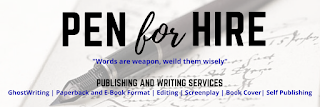
December 16, 2020
The Inspiration Behind The Wolf Banner, Sons of the Wolf Book II by Paula Lofting
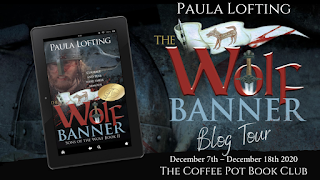
WAR AND BLOODFEUD
"Best battle description ever!"
1056...England lurches towards war as the rebellious Lord Alfgar plots against the indolent King Edward. Sussex thegn, Wulfhere, must defy both his lord, Harold Godwinson, and his bitter enemy, Helghi, to protect his beloved daughter.
As the shadow of war stretches across the land, a more personal battle rages at home, and when it follows him into battle, he knows he must keep his wits about him more than ever, and COURAGE AND FEAR MUST BECOME HIS ARMOUR…
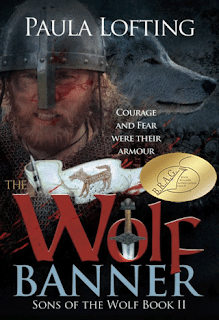
Sons of the Wolf
My Journey
Paula Lofting
I have always wanted to write an epic historical fiction story as long as I could remember, but my journey into writing only began fifteen years ago when I was in my forties and doing my nurse training. The spark that had been there for many years was finally triggered when I attended a re-enactment of the Battle of Hastings. It's not that I had never realised the importance of this great battle and pivotal moment in our history, it just hadn’t ever got under my skin until that day. So my obsession began and I found a book called 1066: The Year of the Conquest by David Howarth which discusses events of that year from the perspective of a village in Sussex known as Horstede and today known as Little Horsted where Mr Howarth lived.
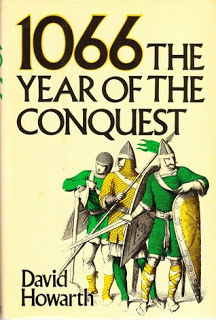
I had found my inspiration, my lead character, and the setting.
Before I start, The Wolf Banner is book 2 in the Sons of the Wolf saga.
Little Horsted could not really be described as a village today, more of a Hamlet, with, according to Mr Howarth, a similar population when he was living there in the ’70s to the time of the Norman Conquest. It is set in the heart of Sussex, not far from the town of Uckfield. Listed in the Domesday Book the land was held from the king by a man called Wulfhere before 1066. Holding their lands from Wulfhere, were 9 villeins and 6 cottars. Between them, they owned 7 and a half ploughs with a team of 8 oxen each and 1 with a half team of 4. Now-a-days, besides a single row of houses, a parish church, and a school, there is also a Golf club and a hotel. Surrounding the place there are farms and fields. There is even a roundabout called the Little Horsted roundabout but nothing much else is there.

A lush green meadow and farmland in Little Horsted, Sussex.
Many 1066 enthusiasts would probably know this book but for me, the way that Howarth has written it is so enchanting that I was able to conjure up scenes in my head of a man, his family, his tenants, and the forest that surrounded them. Children ran through the forest, swimming in the millpond; boys fighting with wooden swords and shields; a warrior and his servant returning home from battle. I could not be anything but inspired by Howarth’s book.
Nothing is known about what sort of man Wulfhere was, what his deeds were or who his family were. Things like that were not recorded for simple folk in those days. However, I hope that if he were alive today, he would not be offended by the life I created for him. Equally, Helghi of Gorde also was a man of the Domesday. Again, I hope I have not offended him too much by my villainous portrayal of him. But this is a fictional interpretation, and their story is my telling alone. I believe it is how life might have been for men and women of this time and although I have written from a twenty-first century point of view, I have tried to create an Anglo-Saxon mindset as a framework for the story. When all is said and done, these were people like you and me. They laughed, they cried, they loved and hated – They were much like us after all.
Buy Links
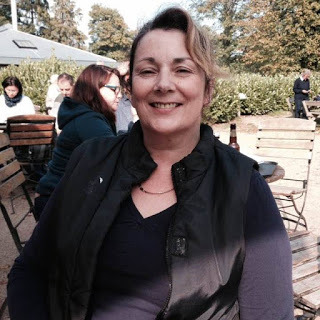
Paula Lofting
Paula Lofting is the author of two volumes in the Sons of the Wolf series of which she is working on her third instalment. She has been a prolific reader all her life, inspired by authors like Rosemary Sutcliffe, Mary Stewart, and Sharon Penman. She is a psychiatric nurse by day and writes in her spare time whenever she can. Mother of three grown-up children and two grandchildren, she lives in Sussex and is also a re-enactor of the late Dark Age period.
As a reenactor of the period, I can actually say that I have fought and died at the Battle of Hastings at least three times.Connect with Paula
Website • Blog • Twitter • Instagram
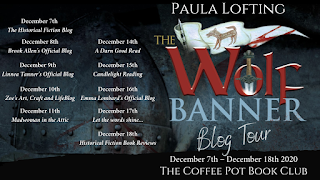
December 15, 2020
The Whispering Bookworm: Meet the author, Mary Ann Bernal #HistoricalFiction
Meet the author, Mary Ann Bernal #HistoricalFiction @BritonandDane
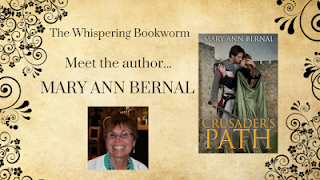
I am excited to introduce you to historical fiction author,
Mary Ann Bernal
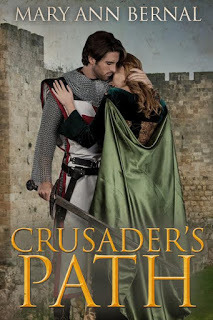
From the sweeping hills of Argences to the port city of Cologne overlooking the River Rhine, Etienne and Avielle find themselves drawn by the need for redemption against the backdrop of the First Crusade. Heeding the call of His Holiness, Urban II, to free the Holy Land from the infidel, Etienne follows Duke Robert of Normandy across the treacherous miles, braving sweltering heat and snow-covered mountain passes while en route to the Byzantine Empire. Moved by Peter of Amiens’ charismatic rhetoric in the streets of the Holy Roman Empire, Avielle joins the humble army of pilgrims. Upon arrival in Mentz, the peasant Crusaders do the unthinkable, destroying the Jewish Community. Consumed with guilt, Avielle is determined to die fighting for Christ, assuring her place in Heaven. Etienne and Avielle cross paths in Constantinople, where they commiserate over past misdeeds. A spark becomes a flame, but when Avielle contracts leprosy, Etienne makes a promise to God, offering to take the priest cowl in exchange for ridding Avielle of her affliction. Will Etienne be true to his word if Avielle is cleansed of the contagion, or will he risk eternal damnation to be with the woman he loves?
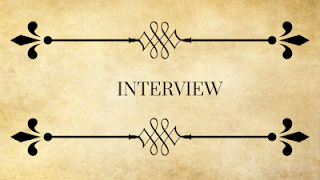
What inspired you to start writing?
Whenever I read a novel or saw a movie, I would ponder different endings, especially if I was not satisfied by how a story ended, whether in print or on the big screen. I would envision the characters behaving one way or another, which, of course, had different consequences for all the characters. My favorite thought has always been, “what if? I became enamored with knights in shining armor, Viking conquest, Crusading armies, Ancient Egypt with its mummies and pharaohs and emperors and gladiators of Ancient Rome.
What was the hardest part about writing this book?
It was a challenge to keep the intricate storylines true to the paths followed by Robert Curthose, Duke of Normandy, Peter the Hermit, and Princes’ Army. Three separate routes met in Constantinople before the march onto Jerusalem. It was a difficult journey filled with hardship, disease, famine, and death. The prize was freeing the Holy Land, a victory bought with blood. Warfare is not glorified but realistically portrayed.
Does one of the main characters hold a special place in your heart? If so, why?
Etienne is a flawed knight of the realm, loyal to his overlord despite the personal cost. His inner conflict within the confines of the mores of his time is relatable today. I wanted him to have it all, unrealistic, of course, especially in such a violent time. Etienne’s journey towards enlightenment gives us hope, living life to its fullest. He is not perfect, and that is why he is special.
If your book was to be made into a movie, who are the celebrities that would star in it?
Etienne: Tom Cullen; Robert Curthose: Henry Cavill; Gideon: Travis Fimmel; Peter the Hermit: Anthony Hopkins; Pope Urban II: Jude Law.
Avielle: Emma Stone; Isabella: Freya Allan; Rebecca: Annabel Scholey.
What do you hope your readers take away from this book?
Understanding warfare, which is not glamorous but deadly. Also, a working knowledge of how the Crusades came into being and how Pope Urban II’s decision created a conflict that continues to this day.
Buy this Book
Amazon US, Amazon UK, B&N, Apple Books, Smashwords
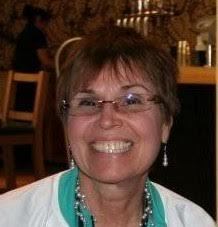
Mary Ann Bernal attended Mercy College, Dobbs Ferry, NY, where she received a degree in Business Administration. Her literary aspirations were ultimately realized when the first book of The Briton and the Dane novels was published in 2009. In addition to writing historical fiction, Mary Ann has also authored a collection of contemporary short stories in the Scribbler Tales series and a science fiction/fantasy novel entitled Planetary Wars Rise of an Empire. Her recent work includes Crusader’s Path, a redemption story set against the backdrop of the First Crusade, and Forgiving Nero, a novel of Ancient Rome.
Since Operation Desert Storm, Mary Ann has been a passionate supporter of the United States military, having been involved with letter-writing campaigns and other support programs. She appeared on The Morning Blend television show hosted by KMTV, the CBS television affiliate in Omaha, and was interviewed by the Omaha World-Herald for her volunteer work. She has been a featured author on various reader blogs and promotional sites.
Mary Ann currently resides in Elkhorn, Nebraska.
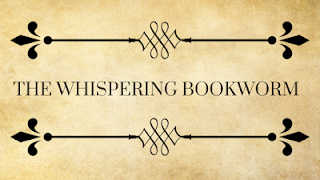
December 10, 2020
The Inspiration behind By Love Divided, The Lydiard Chronicles, Book Two, by Elizabeth St. John
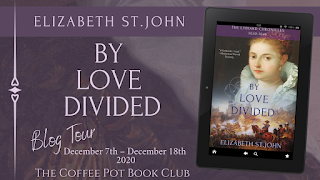
Widowed and destitute, Lucy St.John is fighting for survival and makes a terrible choice to secure a future for her children. Worse still, her daughter Luce rejects the royal court and a wealthy arranged marriage and falls in love with a charismatic soldier. As England tumbles toward bloody civil war, Luce’s beloved brother Allen chooses to fight for the king as a cavalier. Allen and Luce are swept up in the chaos of war as they defend their opposing causes and protect those they love.
Will war unite or divide them? And will they find love and a home to return to—if they survive the horror of civil war? In the dawn of England’s great rebellion, love is the final battleground.
A true story based on surviving memoirs, court papers, and letters of Elizabeth St.John's family, By Love Divided tells of the war-time experiences of Lucy St.John, the Lady of the Tower. This powerfully emotional novel tells of England's great divide and the heart-wrenching choices one family faces.
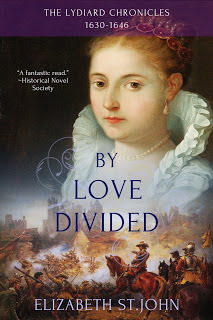
An Author's Inspiration
A Diary Discovered. A World RevealedWriting about my family’s Civil War experience
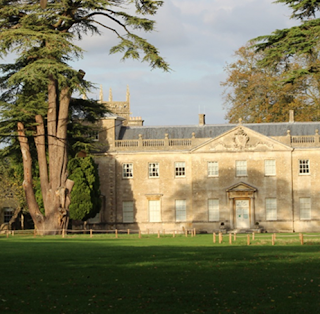
Lydiard House
Growing up in England where the weather promotes reading and the countryside is full of castles and ancient churches, I spent much of my childhood buried in old books, family papers, and walking around ruins. My parents loved history and passed that gene on to me. Our favorite days were spent “St.John-hunting” where we would follow some thread in our family tree and end up in a forgotten churchyard or country house, face-to-face with an ancestor. When I came to write The Lady of the Tower, I felt I knew the characters intimately because of my familiarity with their correspondence and diaries, and that so many of their portraits are preserved at our ancestral home of Lydiard House.

Lucy Hutchinson
I’m very fortunate since my family kept some personal documents, and an extensive family tree preserved on great pieces of Antiquarian sized paper which had been handed down by generations. Those inspired me to want to write only relying on primary sources, and so I then visited museums and libraries where records might be stored. By Love Divided draws on Lucy Hutchinson’s seventeenth-century memoirs, which are archived at Nottingham Castle. When I first encountered them twenty years ago, they were hidden in a battered file cabinet in the castle offices, and by asking and poking around I was thrilled to see the notebooks firsthand. So although pretty much all my records are accessible to the general public, it can take a lot of detective work to find them.
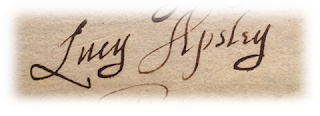 Lucy Apsley's signature
Lucy Apsley's signature However, reading about the past is not the same as writing about it, and for me, the most challenging part of capturing my ancestors on paper was to ensure that I stayed as true to their characters as I could. I did this by reading as many extant documents as possible – even fragments of a letter, or the inventory accompanying a will can give so many clues into a person’s life. And then, looking at the actions across their lives can sometimes inform their character. In researching Allen Apsley, Lucy St.John’s son in By Love Divided, I came across a record that he frequently came drunk into Parliament. That started a whole train of thought that perhaps he was suffering from PTSD as a result of his action in the Civil War, and so I then sought to find evidence that might support that.
Writing about the English Civil War in By Love Divided, I was really determined to bring independent fresh eyes to the conflict, and that made for an extremely interesting journey. Firstly, the ambiguity of the war as it unfolded struck home. A credible historical fiction writer has to “write in the now”; our characters don’t know what lies ahead, although we (often tragically) do. In the 1630s and ‘40s, so many people were making decisions based on very limited knowledge, hear-say, and confusing information. And, they really didn’t think that their actions would lead to armed conflict. Loyalties were fluid – often more to their Land Lords than to any particular cause. And, as in any war, the masses just wanted to get on with their daily lives.
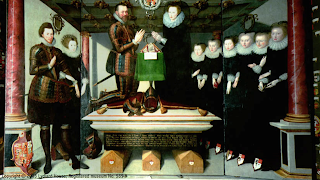
The St. John family
circa 17th Century
When I was writing The Lady of the Tower, I didn’t intentionally set out to write a series. And yet, I knew there were many fascinating stories to be told of my ancestors. Reaching the end of the novel, I realized that I could not leave Lucy’s world. My readers wanted to know more, and so By Love Divided was born. A much broader landscape than the first book, this novel is readable as a stand-alone but also satisfies those readers who wanted to know what happened to The Lady of the Tower. And of course, there’s always more to tell.
In By Love Divided, we left the family at the end of the first Civil War, hoping for a peaceful negotiation and a resumption of normal life. We all know it didn’t work out that way. And both Allen Apsley and John Hutchinson played a key role in the world-changing events that followed. The third book in the Lydiard Chronicles, Written in Their Stars, brings the family full circle back to the Tower of London. Only not, this time, as keepers — but as prisoners.
Buy Links
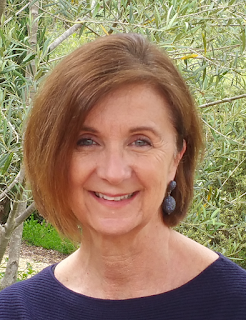
Elizabeth St.John
Elizabeth St.John spends her time between California, England, and the past. An acclaimed author, historian, and genealogist, she has tracked down family papers and residences from Lydiard Park and Nottingham Castle to Richmond Palace and the Tower of London to inspire her novels. Although the family sold a few country homes along the way (it's hard to keep a good castle going these days), Elizabeth's family still occupy them-- in the form of portraits, memoirs, and gardens that carry their legacy. And the occasional ghost. But that's a different story.
Having spent a significant part of her life with her seventeenth-century family while writing The Lydiard Chronicles trilogy and Counterpoint series, Elizabeth St.John is now discovering new family stories with her fifteenth-century namesake Elysabeth St.John Scrope, and her half-sister, Margaret Beaufort. A new medieval short story featuring these women, Road to the Tower, is within the recently-published Historical Fiction anthology Betrayal.
Connect with Elizabeth
Website • Twitter • Facebook • Instagram • Amazon Author Page • Goodreads
